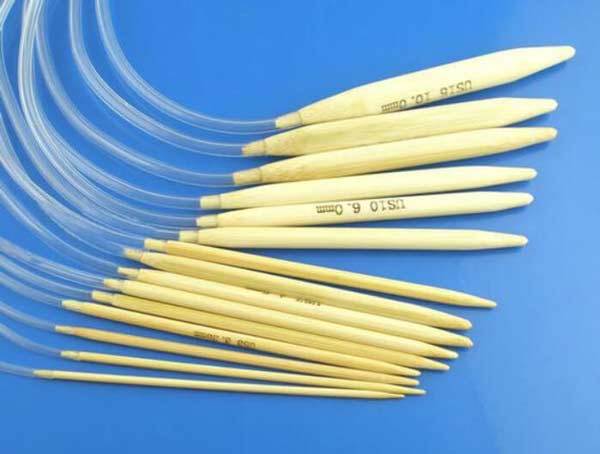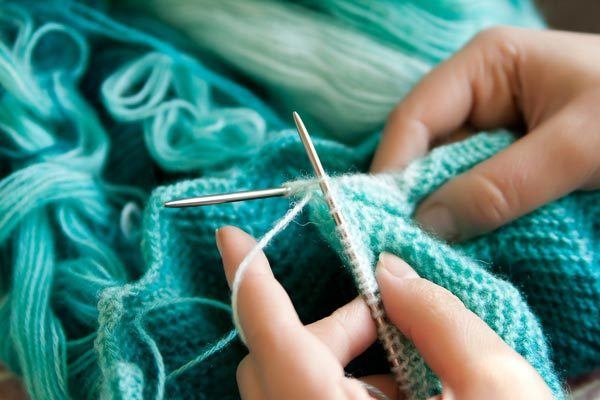How Long Does It Take To Knit A Scarf?
If you’re planning to knit a scarf for the first time, you might get curious as to how long the process will take. Is it hours, days, a week, or a month?
The time it takes to knit a scarf depends on the length and width of the scarf, thickness, complexity of the pattern, needle size, yarn weight and thickness, and your knitting skills. The time you dedicate to knitting the scarf will also affect how long the project takes.
Below, we’ll dig deeper into how long a scarf takes to knit, the factors affecting the time taken, and so much more.
Factors That Affect How Long it Takes to Knit a Scarf
As we have just mentioned above, the amount of time it takes for you to complete your scarf knitting project will depend on several factors. Below, we’ll go through each of these factors and discuss how they influence the knitting time.
Length and Width of The Scarf
One of the factors that will give you a clue on how long your scarf project is its length and width dimensions.
That said, the length and width of your scarf are usually a matter of preferences and how you want it to serve you. If you want a scarf for use in cold weather, you’d want to make it wider so that it gives you more warmth.
The knitting pattern you choose will also have an impact on how wide your scarf will look. Complicated patterns like lace will require you to come up with a wider scarf to show the entire pattern.
It is easy to decide how long your scarf will be. Just stretch out your arms and measure the distance from the fingertips on one hand to the fingertips on the other hand. This will give you the average length of scarf for you.
Small Scarf: 6 to 8 inches (15 to 20 cm.) wide X 40 inches (102 cm.) long
Regular Scarf: 6 to 8 inches (15 to 20 cm.) wide X 60 inches (152.4cm.) long
Long Scarf: 6 to 8 inches (15 to 20 cm.) wide X 70 inches (178 cm.) long
Extra Long Scarf: 6 to 8 inches (15 to 20 cm.) wide X 120 inches (305 cm.) long or longer if you desire.
In case you’re using an existing scarf as a model for your new scarf, make sure you don’t stretch to ensure you get a more precise length.
Quick Tip: If you’re knitting a scarf for a child, make sure you keep things short. An extra-long scarf can easily get entangled and even suffocate your young one when he/she is playing. A cowl might be a more favorable choice for keeping your kid warm without being a safety hazard.
Your Knitting Experience
If you’re still learning to knit, it goes without saying that you’ll take longer to complete a scarf compared to an experienced knitter.
Seasoned knitters who have been in the game for long will knit faster and can easily complete a scarf project in just a few days. A beginner working the same hours per day as an experienced knitter will take a bit longer as they’re yet to fully master the ropes of the game.
Type of Pattern Used
When it comes to making a scarf, there are countless knitting patterns to choose from. These run from simple to complicated.
As you can easily tell, a simple pattern will be much easier to work with and deliver fast results than complicated patterns which require more repetition and accuracy.
The good thing is that these patterns are usually labeled with ratings to help you easily decide which ones are beginner-friendly. here are the ratings and what they mean:
- Beginner: a pattern with a beginner rating is super-easy to work with, making it suitable for first-time knitters. The probability of making a mistake with this pattern is quite low, so you won’t have to worry about undoing your work because you stayed somewhere along the way.
- Easy: this rating is close to the beginner but it involves few repetitions or switching between two colors.
- Intermediate: if you’re an experienced knitter, you should be able to handle all intermediate patterns without any issues. These patterns include simple lace designs, intarsia, and cables. A beginner knitter can still do these patterns, but it will take them longer compared to seasoned knitters.
- Experienced: this is the highest level of rating and refers to more complicated knitting patterns that will take long to master. While these patterns can give you beautiful and more unique scarves, but you want to keep off them as a beginner knitter. Even the experienced knitters will take time before mastering these patterns rated for experienced knitters.

If you’re still practicing knitting, you don’t want to go for the big guns. You should focus more on learning stitches and following the knitting patterns. As such, it is advisable to stick to simple patterns with 1-2 yarn colors. This will ease things up and help you complete your project much faster.
Type of Yarn
Scarf knitting project isn’t selective on the type of yarn to use. In other words, you can use pretty much any yarn you prefer. This is why a scarf is a perfect project for anyone new to the world of knitting.
Most knitters prefer using thicker yarns because it is easier to grip as well as manipulate and will let you finish a big part in less time. But the downside of using extremely thick yarns is that it can get a little challenging depending on the pattern you chose for your project.
Thinner yarns aren’t easy to work with, especially if you’re still learning to knit and you might take forever to finish a scarf if you choose them.
Needle Size

The size of the needle will go hand in hand with the type of yarn you choose. When buying yarn, always check its label to see the recommended needle size.
If it recommends a 7mm needle, it means you can work with an 8mm or 6mm needle.
Working with a smaller needle means a more compact and warmer scarf. A bigger needle, on the other hand, makes stitching looser and your scarf more flexible. Even bigger needle sizes will make your stitches look less defined.
for beginners, consider using wooden or bamboo knitting needles as their surfaces are less slippery and offer better grip on the yarn—making them easier to work with.
Your Availability
Let’s admit it. You’re most likely not a full-time knitter and have other things to take care of in your life, whether it’s going to a job or taking care of your family.
Moreover, knitting nonstop isn’t recommended. Too much of it can result in eye strain, even for experienced knitters, and you’re always advised to take breaks to relax your eyes.
That said, you’ll most likely dedicate a few hours every day to your knitting project and this will directly influence how long your project will take.
Let’s say, for instance, you dedicate 5 hours a day to knit the scarf. In this case, you’ll finish knitting the scarf in a week. But keep in mind that your knitting skills will play a huge role here.
Tips to Knit a Scarf Faster
Now that we have discussed the key factors that affect how long it takes to knit a scarf, you might ask yourself if there’s a way to bend around them and make your knitting faster as a beginner. There’s definitely a way to make things faster!
In this section, we have shared some helpful tips that you can utilize to reduce the time you take to complete your first scarf project faster.
Stick to Beginner-Friendly Patterns
As we mentioned earlier, your main focus as a beginner is to learn the stitches and how to follow the patterns. it is therefore unwise to go for complicated patterns which will only give you a hard time working on your first ever project. Use beginner or easy-rated patterns if you want to make your scarf in no time.
Stick to Simple Stitches
Just like patterns, you should also lean on the basic stitches if you want your project to go faster. Examples of beginner-friendly stitches to consider include Purl and Knit stitches. The more you practice with these two sites for your first projects, the easier it becomes to master more complex stitches. after all, most of the stitch variations used in knitting are usually a combination of purl and knot stitches.
Go Big on Yarns and Needles
Another trick you can use to help you complete your projects much faster is using big/thick yarns and needles for your project. Worsted and chunky weight yarns will be a good place to start with. They’ll make bigger stitches, allowing you to finish your scarf much faster than thinner yarns.
Don’t Overwhelm Yourself with Long and Wider Scarves
For beginners, we advise you to stick to narrow and short scarves. These are easy to work on and you can finish them sooner. Going for longer and wider scarf models will be overwhelming yourself and you make take ages to get it completed.
Still have no clue on the dimensions of a scarf to knit? If yes, a 20 cm wide by 102 cm long would be a good model for a starter. It is short and skinny and will give you a decent starter project.
The Mistakes That You Should Avoid When Knitting A Scarf
It's very normal for you to make several mistakes go a long way with the learning process and getting to be experienced with the skills required to knit a scarf. Some mistakes are unavoidable especially for beginners, but here are some tips that will help you avoid them.
Final Words
A scarf is an easy project to work on whether you’re a beginner or seasoned knitter. There is no pre-set time for completing this project. The time it takes to get it done boils down to the length and width of scarf you’ll be knitting, the type of yarn and size of needle you use, the knitting pattern, your knitting skills, and the time you devote to your project.
If you’re just starting out, you should aim to make your scarf project as easy and fast as possible by using beginner-friendly patterns and stitches, bigger needles, and yarns, and start with a short and narrow scarf model. This will help you quickly finish your first knitting project.
Remember, completing even the simplest project as a beginner knitter will boost your confidence and make you want to go on with your knitting hobby.

